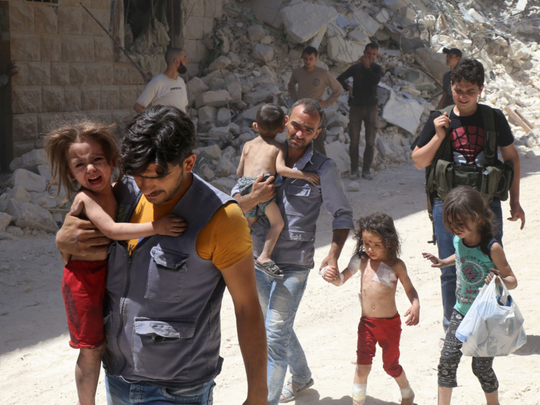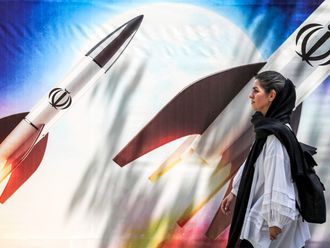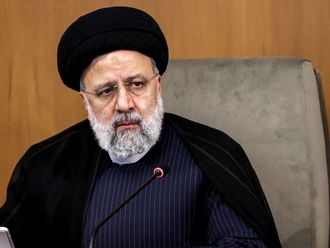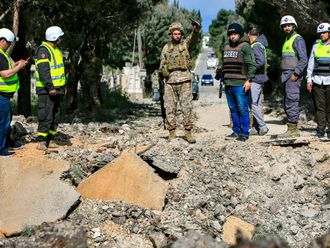
Beirut: The battle for Syria’s Aleppo, which is key for both the regime and rebels and the most important so far in a five-year civil war, is likely to be protracted.
Both sides have massed troops around the country’s northern second city, which has roughly been divided since 2012 between a regime-held west and a rebel-controlled east.
How strong are the rebels?
The Army of Conquest — which in 2015 drove the regime out of most of the northwestern province of Idlib — is the main rebel coalition in this battle against forces loyal to President Bashar Al Assad.
The alliance includes a dozen groups including the Fateh Al Sham Front — which used to have ties with Al Qaida — and the Islamist faction Ahrar Al Sham.
According to military experts, the alliance consists of 30,000 to 40,000 well-trained and motivated fighters, including around 10,000 in Aleppo province. Among them are several thousand foreign fighters.
They have tanks, armoured personnel carriers and artillery — mostly captured from the Syrian army. They also have US-made anti-tank TOW missiles.
Syria analyst Charles Lister said groups involved in the Aleppo offensive have for the first time received American-made weaponry normally reserved only for US-backed forces fighting Daesh.
But the rebels’ most effective weapons remain car bombs, able to breach their enemy’s lines of defence, and suicide bombers to sow panic on the opposing side.
What of the regime’s firepower?
The rebels face the Syrian army and its militia ally, the National Defence Forces, as well as fighters from Iran, Iraq and the Lebanese Shiite movement Hezbollah.
Pro-regime website Al Masdar News reported that regime forces had at least 100 tanks, 400 troop carriers and 30,000 to 40,000 men on the ground.
But not all are of the same calibre. Beside the more experienced soldiers are also conscripts who would rather run.
The army includes several thousand assault troops devoted to Colonel Suhail Hassan, who is nicknamed ‘The Tiger’, the country’s elite Republican Guard, its special forces and Hezbollah’s elite troops, Al Masdar said.
As for firepower, regime forces have tanks, artillery, warplanes and the support of Russia’s very precise airplanes.
What’s at stake?
There is much at stake for both sides.
“The rebels simply cannot leave their brothers besieged in Aleppo,” said analyst Fabrice Balanche.
“For Al Assad’s camp, taking back Aleppo would mean then being able to surround the rebels in Idlib province,” he said.
“Retaking Aleppo would [also] allow Al Assad’s camp to be in a strong position in international negotiations. This is about presenting the new US administration with a fait accompli in January.”
Who might win?
While the coming battle might well be fierce, it will also likely last a long time as neither side can risk weakening their numbers on other fronts to bring fighters to Aleppo.
“The regime remains handicapped by its manpower shortage and probably thinned its defences in the south so as to move dependable troops to the fight around Castello Road north of Aleppo city, said Yazid Sayegh, senior associate at Carnegie Middle East Centre.
But “there is no way the opposition can take the whole of Aleppo, for the same reasons of limited manpower and also limited firepower... and many more people in regime areas”.










